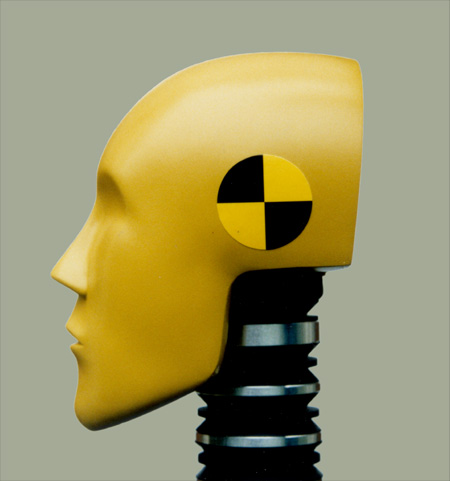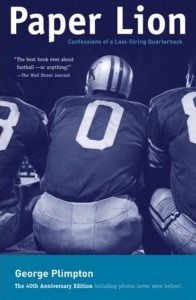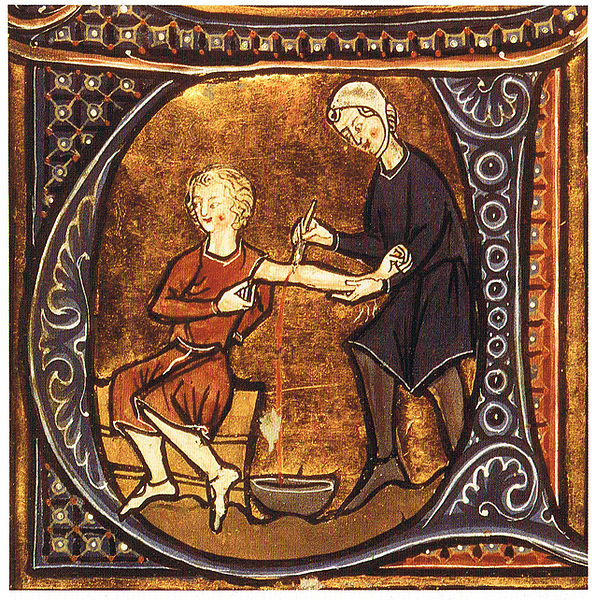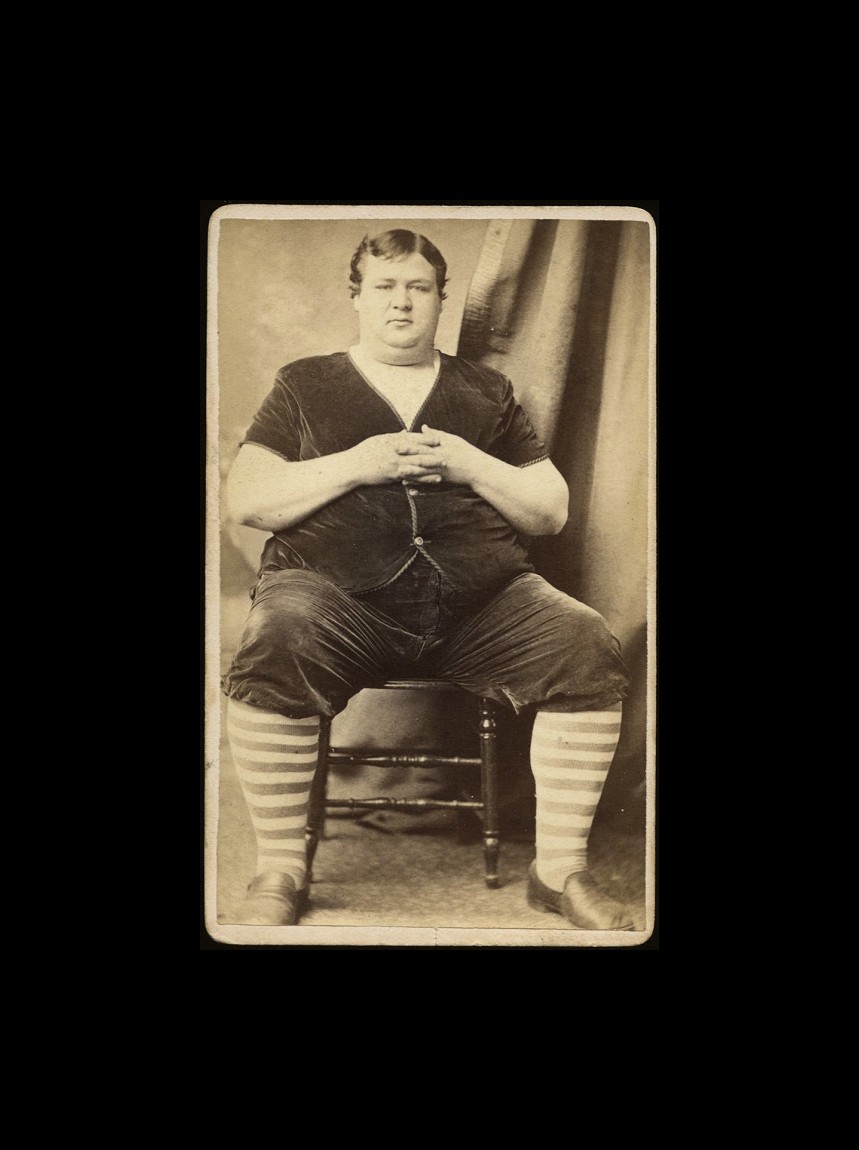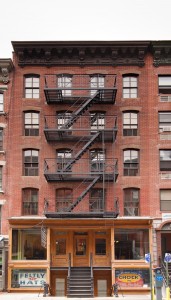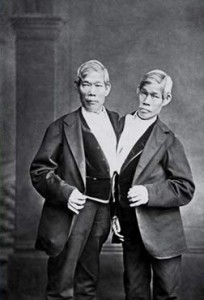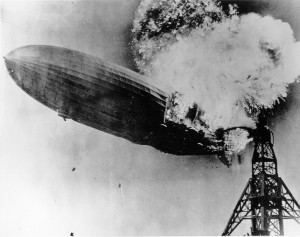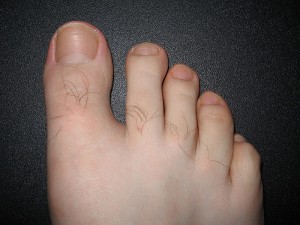This is your life now. Work is scarce so you do what you must when you’re told to. You work the graveyard shift (if you’re lucky enough to be offered it). But what if you can’t stay energetic in the middle of the night? What if you work during the daylight hours but spend half the night digesting your computer screen, trying to keep up with the flow of information, keeping track of the other you? How can you summon the strength? For an age like ours, there’s Nuvigil, a stimulant for “shift work disorder” from the good people at Cephalon. Side effects include (no joke): life threatening allergic reaction, skin rashes, chest pain, dark urine, depression, anxiety, hallucinations, psychosis, mania, thoughts of suicide, aggression, and other mental problems, headache, nausea, dizziness, and trouble sleeping. It costs $300 a month. You will pay.
Adam Curtis’ silicon-phobic BBC documentary series, which takes its title from Richard Brautigan’s great poem.
Tags: Adam Curtis, Richard Brautigan
Dick Cavett queries Jean-Luc Godard in 1980. Both were past-peak but smart.
We want to be first, we want something other people don’t have, we want a great deal. Tell us that we’re special, make up for all that we lack.
•••••••••
Affianced women make a mad dash for discount wedding gowns at the “Running of the Brides” promotion at Filene’s Basement:
Far more depressingly, people stampede into a Florida courtroom hoping to grab a coveted seat at the Casey Anthony murder trial:
Tags: Casey Anthony
Paleontologist Jack Horner, who wants to use genetic advances to create a living dinosaur so that we can all know the thrill of death by dinosaur, presented this new TED Talk about his Chickensauraus.
Tags: Jack Horner
I interviewed George Plimpton shortly before his death, though I accept no blame for his demise. In 1966, the journalist, editor, party maven and prankster scored one of his greatest successes with Paper Lion, a sports book about trying out for third-string quarterback for the Detroit Lions. The other players weren’t in on the lark, though they soon came to realize the 36-year-old rookie was better at throwing back martinis than throwing tight spirals. The book grew out of “Zero of the Lions,” the author’s famous 1964 Sports Illustrated article. An excerpt from that piece:
“I looked for my helmet, relieved to see it lying in the grass a few yards away. My impulse was to put it on. From the beginning I’d had trouble getting into the helmet. The procedure was to stick the thumbs in the helmet’s ear holes and stretch the helmet out as it came down over the head—a matter of lateral pull, and easy enough if you practiced isometrics, but I never had the strength to get my ears quite clear, so they were bent double inside the helmet once it was on. I would work a finger up inside to get the cars upright again, a painful procedure, and noisy, the sounds sharp in the confines of the hard shell of the helmet as I twisted and murmured until it was done, the ears ringing softly. Then quiet would settle in the helmet, and I would look out beyond the bars of the nose guard—the ‘cage,’ the players call it—to see what was going on outside, my eyes still watering slightly. It was even more difficult to get the helmet off. The first helmet Friday Macklem had given me was too small—a helmet is supposed to fit snugly to afford the best protection—and when I tried it on in front of my locker I yelled as it came down over my ears. Wayne Walker, the big linebacker, happened to be chatting with me at the time.
‘How’d she feel?’
‘Feels fine. Snug,’ I said. ‘Once you get the thing on.’
I tried to take it off. I got my thumbs in the ear holes and tried to budge the helmet loose.
‘I’m stuck in here,’ I said, simply.
Walker began to grin. He looked down the locker room aisle for other players who would have enjoyed the dilemma. Mercifully, none were on hand.
‘Damn!’ I said. ‘I can’t budge this thing.'”
••••••••••
Plimpton parlayed his Paper Lion success into Oldsmobile Vista Cruiser ads:
Tags: George Plimpton
An excerpt (via Wired) from The Red Market, Scott Carney’s horrifying account of contemporary flesh peddlers of all sorts, including an Indian farmer who holds people captive and “milks” them for blood which is sold for profit:
“For the last three years the man had been held captive in a brick-and-tin shed just a few minutes’ walk from where the farmers were drinking tea. The marks on his arms weren’t the tell-tale signs of heroin addiction; they came from where his captor, a ruthless modern-day vampire and also a local dairy farmer and respected landowner named Papu Yadhav, punctured his skin with a hollow syringe. He had kept the man captive so he could drain his blood and sell it to blood banks. The man had managed to slip out when Yadhav had forgotten to lock the door behind him.
The emaciated man brought the officers to his prison of the last three years: a hastily constructed shack sandwiched between Papu Yadhav’s concrete home and a cowshed. A brass padlock hung from the iron door’s solid latch. The officers could hear the muffled sounds of humanity through the quarter inch of metal.
They sprung the lock and revealed a medical ward fit for a horror movie. IV drips hung from makeshift poles and patients moaned as if they were recovering from a delirium. Five emaciated men lying on small woven cots could barely lift their heads to acknowledge the visitors. The sticky air inside was far from sterile. The sun beating down on the tin roof above their heads magnified the heat like a tandoor oven. One man stared at the ceiling with glassy eyes as his blood snaked through a tube and slowly drained into a plastic blood bag on the floor. He was too weak to protest.”
Tags: Papu Yadhav, Scott Carney
Casablanca went through an astounding number of writers and directors, somehow becoming an all-time classic against all odds. In 1971, Ingrid Bergman recalled the turmoil for an interviewer whose hair was subsequently declared a sovereign nation.
Tags: Ingrid Bergman
Some smart person on Reddit posted this image of nineteenth-century circus “Fat Man” Frank Williams, who was considered so grotesquely overweight during his life that he amazed crowds at sideshows. Today he would be far too slender to earn a place on network TV weight-loss spectacles.
Tags: Frank Williams
From “My Dealing, Stealing, Squealing Neighbors,” a recent New York magazine piece by the excellent Luc Sante about his years living in Manhattan tenements:
“The task of holding the house together fell on the super, a man named Zygmunt, whom everyone called George. He lived in the first apartment on the right as you came in, was usually available—except on Sunday mornings, when his hangover took precedence—and was a dab hand with a pipe wrench. He did commendable work under the circumstances, although he never was able to fix the bathtub of Rose and Simon, my neighbors across the hall, with the result that they came over to use mine a few times a week for the entire term of my residence.
By and large, I loved my neighbors, although I worried constantly, owing to the presence of so many loose cannons in a single fragile container. One afternoon I took myself out to the movies. Film Forum was showing the last picture directed by Erich von Stroheim, which he called Walking Down Broadway although it ended up as Hello, Sister! It contained a subplot about a construction worker who, after getting plowed at the saloon across the street from his work site every night, would sneak back in and steal a few sticks of dynamite, which he’d throw under his bed when he got home. In the third act, naturally, nature took its course. I walked home thinking about how such a character would not be out of place in my building. Then when I opened the door I beheld my neighbors, all of them, out in the halls, rushing around with buckets of water. We had very narrowly escaped a conflagration.
It seemed that the art critic on the fourth floor had become immersed in crack to the extent that he had neglected to pay his Con Ed bill. His service cut off, he had been lighting his way with candles, although he was perhaps not as attentive as the situation might warrant. Furthermore, his apartment contained several years’ worth of newspapers, as well as a small fortune in contemporary oil paintings. Nature had taken its course.”
••••••••••
Luc Sante collects postcards:
More Luc Sante posts:
Marshall McLuhan, a devout Catholic, on a 1970s religious program.
More McLuhan posts:
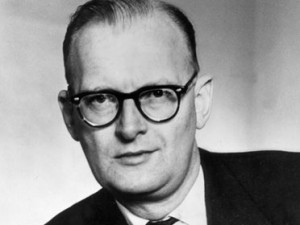 Two excerpts from Arthur C. Clarke’s 1986 Playboy interview.
Two excerpts from Arthur C. Clarke’s 1986 Playboy interview.
••••••••••
“PLAYBOY: You’ve said that the famous opening sequence, in which the bone thrown into the air by the prehistoric man-apes becomes the space vehicle Discovery, came about by accident.
CLARKE: Yes, Stanley and I were trying to figure out that crucial transition. We were walking back to the studio in London and, for some reason, Stanley had a broomstick in his hand. He threw it up into the air, in a playful way, and he kept doing it, and it was at that moment that the idea of making the broomstick into the bone that gets turned into Discovery came about. I was afraid it was going to hit me in the head. [Laughs] So later we filmed it with some sort of bone. That shot was the only one in the movie done on location. It was shot just outside the studio. There was a platform built and, just beneath it, all the London buses were going by.”
••••••••••
“PLAYBOY: In the postscript to your book Ascent to Orbit, you talk about technology quite a bit. You have a lot of technology in your own home—your John Deere computer “Archie,” your satellite dish, your Kaypro-II computer. Yet you write, “This power over time and space still seems a marvel to me, even though I have been preaching its advent for decades. But the next generation will take it completely for granted and wonder how we ever managed to run the world without it … which we never did. May these new tools help them to succeed where we failed so badly.” Do you still think that way?
CLARKE: [Pauses] Absolutely. That’s why I’m so delighted that kids these days are not using their computers strictly to play games but are using them to process information. Knowledge really is power, and computer technology has increased an individual’s potential for power considerably. I still think it’s one’s duty to be optimistic about the possibilities of that power, without being unrealistic. It’s just that if one radiates doom and gloom about the possibilities of technology, one is in danger of creating a self-fulfilling prophecy about self-destruction.”
••••••••••
Bone becomes spaceship:
More Arthur C. Clarke posts:
Tags: Arhtur C. Clarke, Stanley Kubrick
The shit-kicking (and shit-eating!) Divine visited that bombastic chucklehead Tom Snyder in 1979. Also on hand: Warhol superstar Holly Woodlawn.
From Divine’s 1988 obituary in the Times of London: “Divine, the 21-stone drag artist who has died in Los Angeles at the age of 42, won a cult following through his appearances in American underground films.
Once voted ‘the filthiest person alive,’ Divine built his reputation on the ability to shock. But it was, he claimed, part of a calculated assault on what he saw as American materalism and hypocrisy.
He always disliked being labelled a transvestite and insisted that cha-cha heels and thigh-splitting spandex dresses were purely ‘work clothes’ designed to make people laugh.
He was born Harris Glen Milstead and started his career as a hairdresser in Baltimore, Maryland. The film director John Waters, who had been at school with him, devised his professional name.
Made during the 1970s, the Waters/Divine films were deliberately raucous, crudely made and sexually explicit but achieved a critical respectability as a searing portrait of a sick society. They included Desperate Living, a tale of rape, murder and cannibalism, and Female Trouble, in which Divine played a delinquent schoolgirl who is violated by a struck driver and ends up in the electric chair.”
Tags: Divine, Harris Glen Milstead, Holly Woodlawn, John Waters, Tom Snyder
The famous 19th-century Siamese twins Chang and Eng, conjoined brothers who were actually born in Siam, passed away in North Carolina at the age of 63 in 1874. The siblings were sideshow and medical curiosities during their lives, so it’s no surprise that they attracted much interest at the time of their death. An article in the February 6, 1874 Brooklyn Daily Eagle reported on the post-mortem. An excerpt:
“On Sunday the Scientific Medical Commission, consisting of Dr. William H. Pancosat, of Jefferson Medical College, Dr. Harrison Allen, of the University of Pennsylvania, and Dr. T.H. Andrews, also of Jefferson Medical College, arrived at the residence of Mrs. Eng, one of the widows of the Siamese twins. A consultation took place between the medical gentlemen and both the widows, the former setting forth the object of their visit and urged the importance to science of an examination of the bodies.
After a brief discussion, during which both the ladies evinced considerable feeling, they consented to the propositions of the commission, on the condition and with the distinct understanding that the bodies should not be injuriously mutilated. This the commission agreed to in a few moments. Afterward they descended to the cellar where the bodies were interred. This was found to be a dark but somewhat spacious apartment, the floor of which was naked earth, the soil of the substrata of rock being of a porous and mouldy nature. Accompanying the commission was a tinner, to open the case in which the bodies had been placed. The scene was now quite a weird and solemn one. The temporary sepulchre was reached by a northwestern door from another basement apartment, and when the commission descended the crowd of neighbors thronged in and stood silently around the improvised tomb of the twins. The darkness being intense, pine wood knots were then lighted in one corner, the flickering glare of which cast ghostly shadows of the spectators athwart the wooden ceiling and along the roughly built granite walls of the room.
The tomb was then opened. There was a cadaveric odor from the coffin. A white gauze muslin covering being drawn off, the faces of the dead twins were exposed. The features of Chang were partially discolored, those of Eng being quite natural.
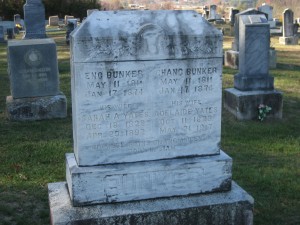 The members of the commission, assisted by those present, then disrobed the bodies, and a partial examination was made, no operation being performed, and the result of this was followed by a medical consultation. From what could be learned it was found the bodies, though well preserved so far, would in a few days be in a state of decomposition, and that the surgical operation, if performed now, might endanger the ultimate preservation of the now defunct natural curiosity, a consequence which both the commission and the families were anxious to avoid. It was further decided that the facilities for an autopsy were so meagre and insufficient that it would not be wise to attempt it on the present occasion, and that beside the present examination and efforts to obtain good photographic views of the ligament and the bodies, the operations of the commission would be limited to a partial embalmment to insure the preservation of the bodies. A number fo efforts to obtain photographic views were then made, resulting successfully in one instance only. After which the partial embalmment was performed, and the bodies were once more covered in the coffin. The widows then consented to have the bodies removed to the College of Physicians at Philadelphia.
The members of the commission, assisted by those present, then disrobed the bodies, and a partial examination was made, no operation being performed, and the result of this was followed by a medical consultation. From what could be learned it was found the bodies, though well preserved so far, would in a few days be in a state of decomposition, and that the surgical operation, if performed now, might endanger the ultimate preservation of the now defunct natural curiosity, a consequence which both the commission and the families were anxious to avoid. It was further decided that the facilities for an autopsy were so meagre and insufficient that it would not be wise to attempt it on the present occasion, and that beside the present examination and efforts to obtain good photographic views of the ligament and the bodies, the operations of the commission would be limited to a partial embalmment to insure the preservation of the bodies. A number fo efforts to obtain photographic views were then made, resulting successfully in one instance only. After which the partial embalmment was performed, and the bodies were once more covered in the coffin. The widows then consented to have the bodies removed to the College of Physicians at Philadelphia.
The commission returned to Mount Airy late Sunday evening. On Monday they left for Salem, in Forsyth County, in a carriage, the wagon containing the coffin following, and behind two buggies with the photographers, making for quite a funeral procession, which attracted the attention of the people all along the route. On Tuesday afternoon the cortege reached Salem, where the bodies were shipped to Greensboro, the commission accompanying them. They arrived at that point this morning and left for Philadelphia this afternoon, where they will arrive to-morrow at half past one o’clock.”
Tags: Chang and Eng, Chang Bunker, Eng Bunker
…that this site was hacked last night, so posts from the last six days have been wiped out. I’ll be gradually reposting a few of the best, but if there’s anything you really wanted to read or watch and it’s gone now, send me an email (afflictor1@gmail.com), and I can probably get you a link to where I originally found the material. Thanks, Darren.
Single-file lines that snake around–like at airports or banks–haven’t always been the way people queued up. According to “Mr. Next,” Ian Parker’s fun 2003 “Talk” piece in the New Yorker, the practice only began in America in the 1980s. It seems so simple and obvious, but someone had to come up with it. An except:
“The history of American queuing has a simple outline. First there were hordes with sticks, then there were lines, and then, in the early nineteen-eighties, thanks in part to visionary thinking at the Columbus, Ohio, headquarters of Wendy’s (and initiatives at American Airlines and Chemical Bank, among others), customers began to be asked to form lines that the trade usually describes as ‘serpentine’: they snaked back on themselves, and the person at the head of the snake stepped up to the next available cashier or teller. This system was plainly fairer: no one who arrived after you would be served before you. It removed most fear and doubt from the queue calculus, leaving only impatience and anger; and in almost every place where it could be adopted it was.”
Another Ian Parker post:
Tags: Ian Parker
Entertaining putz Tom Snyder hectors Ayn Rand in 1979.
Tags: Ayn Rand, Tom Snyder
Toenail Collection – for sale – $9 (Newark)
This is a very rare in-valuable item. I mean, how do I know how to price this, what it’s worth? You won’t find somethin’ like this on e-bay, bet your ass! I’ve decided to sell my entire toenail collection that I have been collecting for many many years now. I was going to put this ad under the Antiques category, but I threw a few new ones in there a few days ago. Been keeping ’em since I was about 6, I’m 81 now. I’m willing to do PayPal and mail this out to you. Or, we can meet in Newark somewhere. Not near the airport….wouldn’t want a big wind from a plane to come by just as I’m opening the jar.
The jar is included, with the screw-on top….if I’m gonna mail this out to you, you wouldn’t want these to get loose and all mixed around in the mail, so I’ll keep ’em in the jar. Might be worse than Anthrax! But, better yet, if we meet in person, I can update the jar with my latest nails. Bring scissors. And exact change.
Thirsty pipes.
Tags: Malcom McLaren
I was noodling around on Reddit when I found this odd series of 1910 drawings which tried to predict what life would be like in 2000. Apparently, firefighters and boats would be able to fly, roller skates would be electric, books would be fed directly to the brain and washing machines would be awesome. Fun stuff.
In 1977, Hunter S. Thompson thought President Carter was a badass. That persona was subsumed in scenes of blindfolded American hostages being paraded around in Iran, a national embarrassment which played out nightly, endlessly on flickering screens.
Tags: Hunter S. Thompson, Jimmy Carter
Britain, the former superpower with nothing better to do, once again was the champion of Afflictor Nation, sending more unique visitors to this site than any other foreign country last month.
TOP FIVE:
- Great Britain
- Canada
- Germany
- Australia
- Spain
Betty Friedan in 1964.
Tags: Betty Friedan
We’re plenty dumb right now, but people in the nineteenth century were even dumber, as the following story from the October 17, 1890 Brooklyn Daily Eagle about a boy with a wooden hoop and a neighbor with a bad temper proves. An excerpt:
“Justice Goetting this morning held Stephen Rose, of 76 Roebling Street, on $1,000 bail to answer on Thursday the charge of striking 13 year old John Murray, of 230 North Eighth Street on the head with a brick, and injuring him so badly that he is now confined to his home under medical treatment. His physician, Dr. A.A. Weber, is doubtful of his recovery. The complaint is brought by Miss Mary Murray, the boy’s sister. The defendant is about 61 years old. The residences of the two parties, it appears, adjoin, and it is alleged that Rose, annoyed by the boy breaking up a wooden hoop against the wooden fence of the yard, climbed on a ladder and dropped a brick on his head.”
Tags: Dr. A.A. Weber, Justice Goetting, Miss Mary Murray, Stephen Rose

